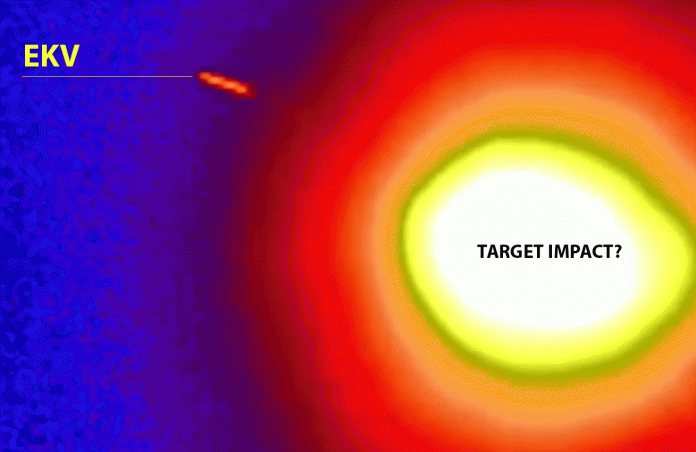Carefully inspecting the video that provided evidence of the successful intercept, one cannot ignore the anomaly visible on 00:59, showing an object closing in rapidly from the left and surviving the explosion.
Travelling at a speed of 10 km/sec (22,500 mph) the Exoatmospheric Kill Vehicle seeks out its target using multi-color sensors, a cutting-edge onboard computer and a rocket motor that helps it steer in space.
It hones in on the target and, with pinpoint precision, destroys it using nothing more than the force of a massive collision. No traditional warhead is necessary.


Even if we misinterpreted the objects, and the EKV is the small, cooler dot on the right, there is no reason for it to explode before impact, since the kill mechanism is kinetic, not explosive.
Defense-Update consulted missile experts about this anomaly. We were assured that these anomalies do happen in tests, particularly at extremely high speed and long ranges.
“Although it seems intriguing, visual tracking of such high-speed events, particularly in thermal vision, is challenging, particularly in the high resolution and high speeds required for exoatmospheric intercept of such fast targets. The high energy released on impact would also saturate the sensors and could cause the ‘smear’ in the infrared. It is likely that Boeing and MDA do not rely their assessment on visual evidence, but on other data, including telemetry from the interceptor and target, that would cease at the same time, to indicate an impact.”




















